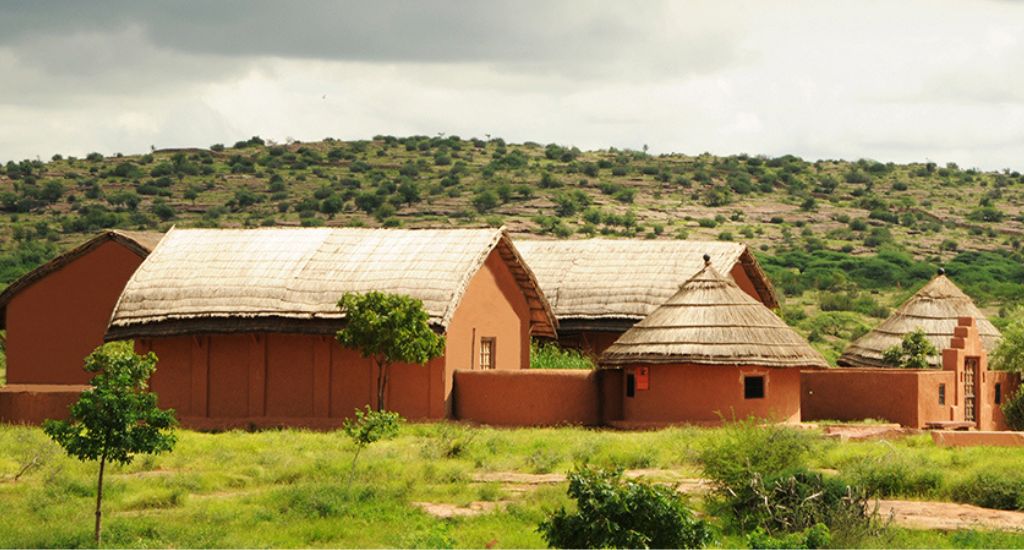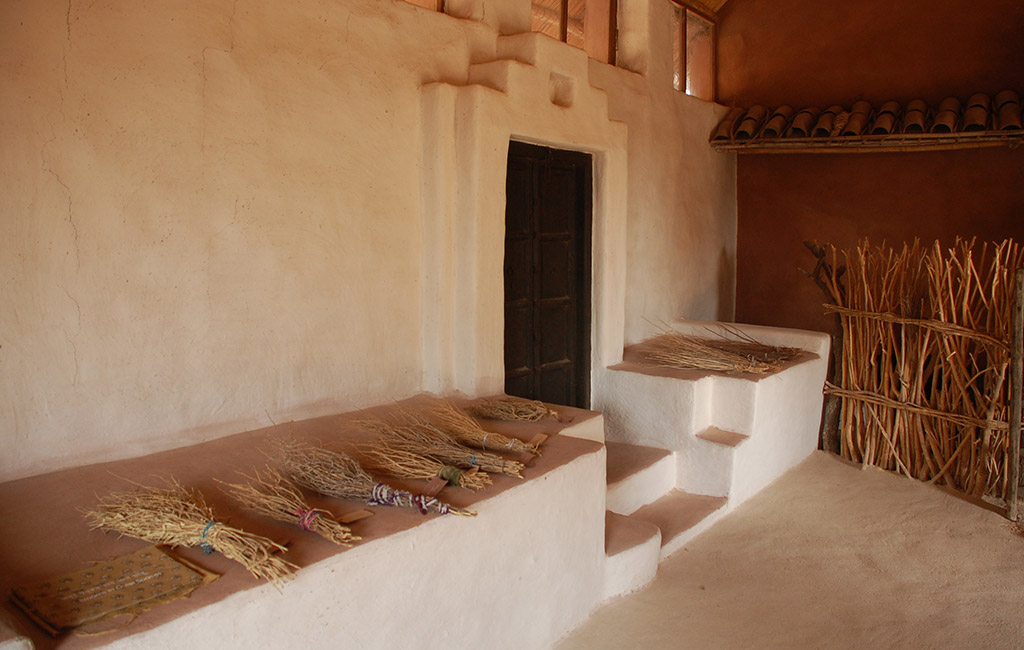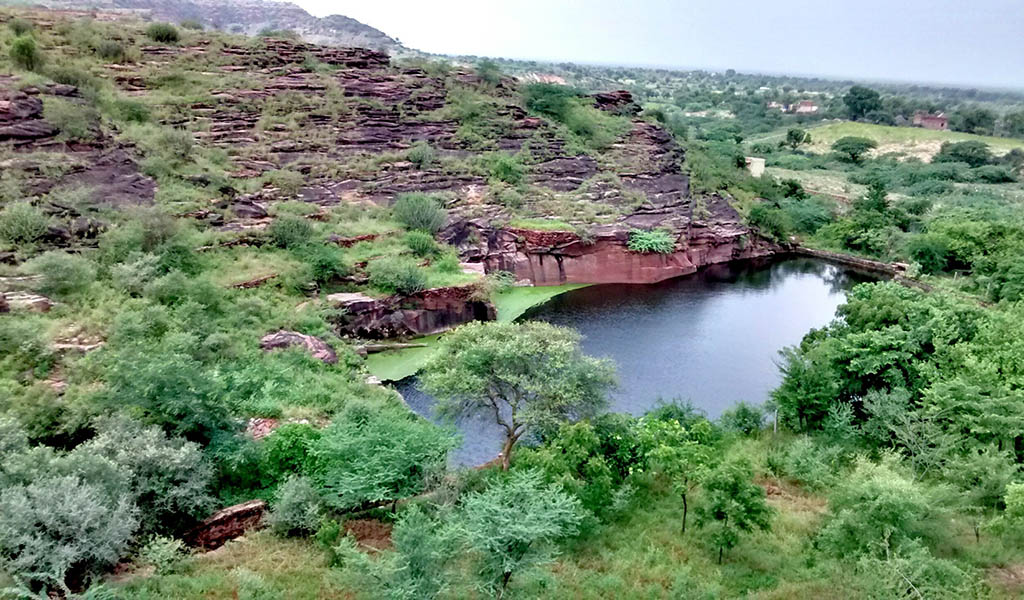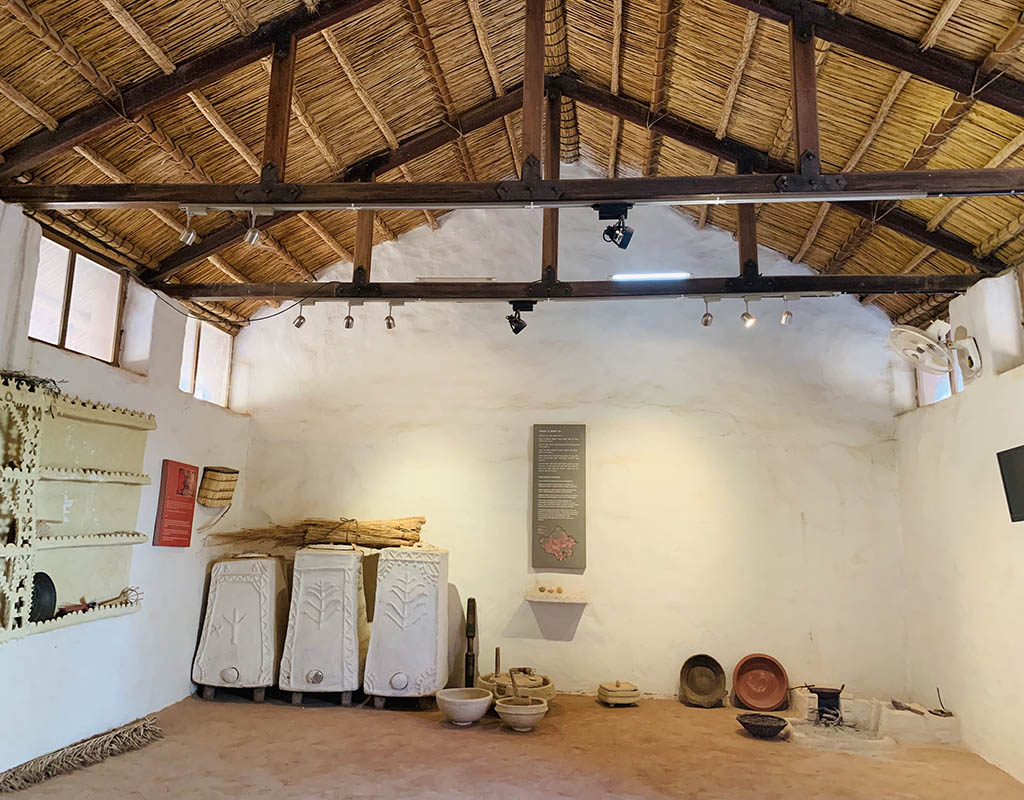
Rajasthan’s rural life museum enchants visitors
Nicknamed "Jhaadu Museum" for the variety of brooms on display, the Arna Jharna Museum in Rajasthan showcases how culture and food connect through basic objects used in everyday life.

Nicknamed "Jhaadu Museum" for the variety of brooms on display, the Arna Jharna Museum in Rajasthan showcases how culture and food connect through basic objects used in everyday life.
The mention of tourism in Rajasthan conjures up images of grand palaces, carved doorways and ornate museums with gold-laced thrones, rich brocades and silver carriages.
The image of western Rajasthan is of golden hued sand dunes stretching up to the horizon.
Promising to create a different but lasting third image is Arna Jharna: The Thar Desert Museum on the periphery of the vibrant desert 15 km from Jodhpur. (Arna means forest and jharna means spring.)
Envisioned by the late folklorist Komal Kothari (Komalda to the people of Rajasthan), the museum is a celebration of the traditional knowledge systems of the desert and the life of the unsung villager.
The most unique exhibit of this ethnographic museum is the display of a variety of brooms used in Rajasthan and their correlation with the lives of the rural folks. The exhibit has more than 180 varieties of brooms collected from 29,000 villages of Rajasthan.
No wonder the place is popularly known as Jhaadu (broom) Museum among the locals.
One with nature
Unlike the usual museums, one does not find curated lawns but a variety of indigenous plants spread over its rocky landscape. Located on a hill, it offers gorgeous views of the surrounding rocks and a ravine with a man-made rain-fed lake.

Effortlessly blending with the surroundings and ecologically conserving its biodiversity makes Arna Jharna the perfect ‘living’ museum that it was envisioned to be.
Peacocks are aplenty in the 10-acre property. Pigeons, partridges and 45 other varieties of birds thrive here as the museum feeds them every day.
The modules of the exhibit, designed like village huts and made with indigenous construction material, are as grounded as the exhibits.
There are six modules at Arna Jharna, each about 7,000 square feet in size. Along with the flora and fauna, one can see stones with ancient carvings. The lake and khejri (Prosopis cineraria) trees are given as much attention as the exhibits of the museum.
Kuldeep Kothari, Komal Kothari’s son and the secretary of the Rupayan Sansthan which runs the museum, said when they got the land in 2003 there were only 60 or 70 indigenous fruits plants, like kair (berries).
“But now, there are over 2,000 indigenous plants. How you interact with nature is an important part of the ethos of the museum,” Kothari said.
But nature is not all Arna Jharna has to offer.
We often define culture through our administrative boundaries. But we believe culture depends on the food that is grown and consumed in a particular region.
The culture of the local people is a big part of the living museum, which tries to exhibit coexistence between nature and culture through the humble broom.
“Komalda always said that the museum will not showcase anything exotic. Unlike regular museums where glass cases preserve the ‘do not touch’ objects, we encourage visitors to pick up, touch, feel and experience the display,” said Kothari.

The thematic curation is as unique as the objects on display.
Komal Kothari, along with Vijaydan Detha – also a well-known folk storyteller, writer and co-founder of Rupayan – created a methodology to document culture.
Food displays are also a big part of the museum.
Rajasthan has three major food zones – two-thirds of Rajasthan grows pearl millet, followed by maize. Sorghum is grown in some parts of eastern Rajasthan. Each module of the museum has three parts based on these food zones.
The brooms on display are made from grass that grows in each of these food zones, so each has a unique texture, design and style native to that area.
“We often define culture through our administrative boundaries. But the museum founders believed that culture depends on the food that is grown and consumed in a particular region. Think of it, all our fairs, festivals and celebrations are connected with harvest, with food,” Kothari told Village Square.
The way the broom fits into the wooden fence outside rural houses can be seen. There is one section for the ‘male’ brooms (bungra and havarno) used in the exterior of the houses and one for the ‘female’ brooms (buari and havarni) used only inside the houses.
Their texture, size and ingredient grass vary according to usage. The ‘male’ brooms are made for harder surfaces outside and the ‘female’ brooms for the softer, textured and detailed surfaces inside. The surface decides the kind of grass.

The art used in making some specific brooms also comes through. A kavad (portable storytelling device made of wood with visual narratives of local deities) in the third unit displays all the grasses used as base material for the brooms.
An entire lifestyle is revealed around the broom.
As a design enthusiast, I am charmed by the details in the jhaadu. Never ever did I think there could be so much behind a humble broom.
Climatic conditions impact the form. Understanding one object in perspective of the three food zones, the biodiversity and human use, the stories and the beliefs are understood.
“It’s not just a broom. Through it, the woman using it can be seen, her life can be understood and visualised,” said Narpat Singh Rathore, the museum caretaker and guide.
There are bamboo brooms used on the roadside. The brooms from Jaipur are made of banni (local grass) twigs, and the ones made with palm come from Mewar.
“As a design enthusiast, I am charmed by the details in the jhaadu. Never ever did I think there could be so much behind a humble broom. One is aware of certain temples where brooms are offered to cure skin diseases, but here its connect with the major activities of a villager’s routine comes through,” Sudarshna Bhati, a young professional visiting the museum told Village Square.
The other exhibits at the museum are also related to the basics of rural life: the tradition of pottery, a collection of rare musical instruments native to western Rajasthan and a variety of puppets used in storytelling. Musicians and local people are involved during events.
There is also bespoke curation of the museum depending on the people visiting.
“When botany students come, we talk about specific grasses and fibre-extraction of brooms. For middle-schoolers we offer Mandala workshops. Young children come and use the millstone. With IIT-Jodhpur, we created a water purifying system based on the traditional wisdom in our pottery exhibit,” said Kothari.
But children are the main visitors the museum is geared for.
“If they are exposed to these ideas in childhood, they would carry forward this tradition for life. We want to share a knowledge that is not confined to us, it belongs to the people,” said Anita Kothari, the coordinator for events at the museum.
The lead photo shows a panoramic view of the Arna Jharna Museum (Photo courtesy Rupayan Sansthan)
Shefali Martins is an independent writer based at Ajmer, Rajasthan. Syndicated via Charkha Features. Share your feedback on features@charkha.org